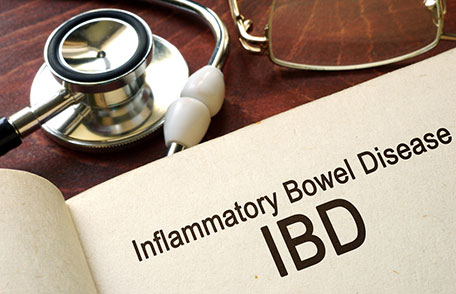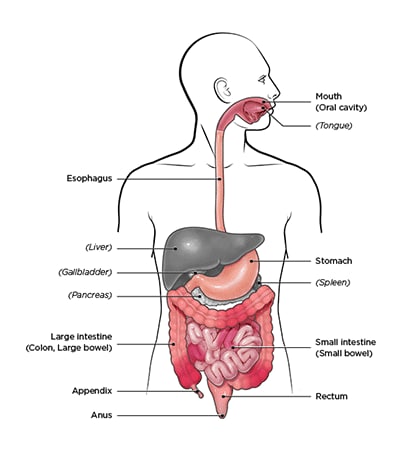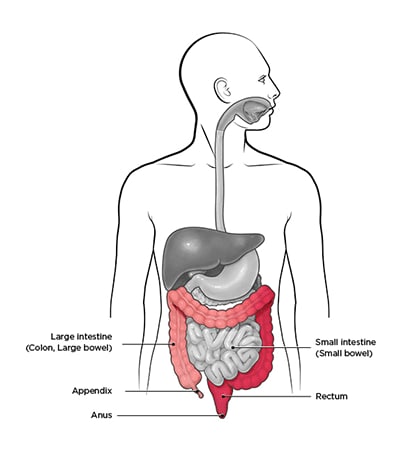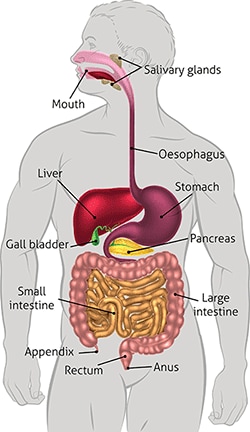Inflammatory Bowel Disease (IBD): What Is It?

Learn about the two inflammatory bowel disease (IBD) conditions, Crohn’s disease and ulcerative colitis.
The number of US adults who have been diagnosed with inflammatory bowel disease (IBD) has increased greatly since 1999—from 2 million to 3 million. However, these estimates do not include people younger than 18 who may also have the disease. May 19 is World IBD Day. Learn about IBD.
What is IBD?
IBD which is characterized by chronic inflammation of the gastrointestinal (GI) tract1 includes Crohn’s disease and ulcerative colitis. The GI tract extends from the mouth to the anus and includes the organs that digest food, absorb nutrients, and process wastes. Long-term inflammation results in damage to the GI tract.
What are the symptoms of IBD?
Some common symptoms are:
- Persistent diarrhea.
- Abdominal pain.
- Rectal bleeding or bloody stools.
- Weight loss.
- Fatigue.
Some of the differences between Crohn’s disease and ulcerative colitis:

- Can affect any part of the GI tract (from the mouth to the anus). Most often it affects the portion of the small intestine before the large intestine/colon.
- Damaged areas appear in patches that are next to areas of healthy tissue.
- Inflammation may reach through the multiple layers of the walls of the GI tract

- Occurs in the large intestine (colon) and the rectum.
- Damaged areas are continuous (not patchy) – usually starting at the rectum and spreading further into the colon.
- Inflammation is present only in the innermost layer of the lining of the colon.

Inflammatory bowel disease is a collection of inflammatory conditions of colon and small intestine.
How common is IBD in the United States?
In 2015 and 2016, about 3 million US adults (1.3%) reported being diagnosed with IBD (either Crohn’s disease or ulcerative colitis).2 This was a large increase from 1999 (2 million, or 0.9% adults reported IBD).3
Some groups were more likely to report IBD, including those —
- Aged 45 or older.
- Women.
- Non-Hispanic white.
- With less than a high school level of education.
- Divorced, separated, or widowed.
- Not currently employed.
- Born in the United States.
- Living in poverty.
- Living in suburban areas.
This estimate does not include children younger than 18 years, who may also have IBD. Most people with IBD are diagnosed in their 20s and 30s.
What causes IBD?
We do not yet know the exact cause of IBD, but it is the result of an improper immune response. A normal immune system attacks foreign organisms, such as viruses and bacteria, to protect the body. In IBD, the immune system responds incorrectly to environmental triggers such as smoking, viruses, or bacteria, which may cause inflammation of the GI tract. There also seems to be a genetic component—someone with a family history of IBD is more likely to develop this inappropriate immune response.
How is IBD diagnosed?
IBD is diagnosed using a combination of endoscopy and colonoscopy (both of which let your doctor see inside your body by inserting an instrument with a very small camera), radiologic imaging (such as X-rays, CT scans, or MRIs), and blood or stool tests.
How is IBD treated?
Several types of medicines may be used to treat IBD. Some vaccinations are also recommended for patients with IBD to prevent infections. For some patients, surgery may be required to remove damaged portions of the GI tract, but advances in treatment with medicines mean that surgery is less common than it was a few decades ago. Since Crohn’s disease and ulcerative colitis affect different parts of the GI tract, the surgical procedures are different for the two conditions.
IBD is not Irritable Bowel Syndrome (IBS)…
IBD should not be confused with irritable bowel syndrome or IBS. Although people with IBS may have symptoms similar to IBD, IBD and IBS are very different. IBS is not caused by inflammation and does not damage the bowel. Treatment is also different. Learn more about the difference between IBD and IBSpdf iconexternal icon.
IBD is not celiac disease…
Celiac disease is another condition with similar symptoms to IBD. However, the cause of celiac disease is known and is very specific. It is an inflammatory response to gluten, a group of proteins found in wheat and similar grains. The symptoms of celiac disease will go away after starting a gluten-free diet, usually after a few months.
- The Facts About Inflammatory Bowel Diseases. www.crohnscolitisfoundation.org/assets/pdfs/updatedibdfactbook.pdfpdf iconexternal icon. New York, NY: Crohn’s and Colitis Foundation of America;2014.
- Xu F, Dahlhamer JM, Zammitti EP, Wheaton AG, Croft JB. Health-risk behaviors and chronic conditions among adults with inflammatory bowel disease — United States, 2015 and 2016. MMWR. 2018;67(6):190-195. http://doi.org/10.15585/mmwr.mm6706a4external icon.
- Nguyen GC, Chong CA, Chong RY. National estimates of the burden of inflammatory bowel disease among racial and ethnic groups in the United States. J Crohns Colitis. 2014;8:288–95. http://doi.org/10.1016/j.crohns.2013.09.001external icon.